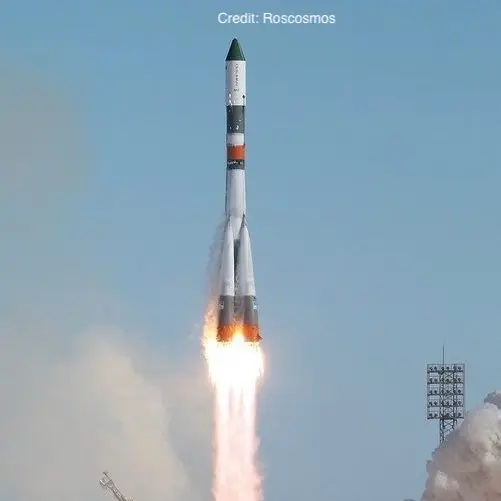Soyuz 33
Launch Success
Liftoff Time (GMT)
17:34:34
Tuesday April 10, 1979
Mission Details
Soyuz 33
Soyuz 33 was a 1979 Soviet crewed space flight to the Salyut 6 space station. It was the ninth mission to the orbiting facility, but an engine failure forced the mission to be aborted, and the crew had to return to Earth before docking with the station. It was the first failure of a Soyuz engine during orbital operations. Soyuz 33 descent module in Aviation museum Plovdiv The two-man crew, commander Nikolai Rukavishnikov and Bulgarian cosmonaut Georgi Ivanov, suffered a steep ballistic re-entry, but were safely recovered. The original intention of the mission had been to visit the orbiting crew for about a week and leave a fresh vehicle for the station crew to return to Earth in. The mission failure meant that the orbiting Salyut 6 crew lacked a reliable return vehicle as their Soyuz had the same suspect engine as Soyuz 33. A subsequent crewed flight was canceled and a vacant craft with a redesigned engine was sent for the crew to use. This is Soyuz's 51st flight, and 32nd crewed flight. The Soyuz is a Soviet crewed spaceship, developed to made manned lunar missions. This version called 7K will fly 4 times on the giant launcher N1, and several tens of times on Proton to fly over the Moon, which will be successful during the mission Zond 4. Soyuz will become the first spacecraft to transport living beings to the Moon during the flight of Zond 5, with two turtles. Subsequently, it is adapted to low orbit and will fly on the Soyuz launcher to serve the Salyut and Mir stations and the ISS.
Low Earth Orbit
1 Payload
6,860 kilograms
Rocket


Manufacturer
RKK EnergiyaPrice
$20.00 million
Rocket
Height: 51.32m
Payload to Orbit
LEO: 6,860 kg
GTO: 0 kg
Liftoff Thrust
4,456 Kilonewtons
Fairing
Diameter: 3m
Height: 15.59m
Stages
3
Strap-ons
4
Launch Site
Stats
Soyuz U
143rd
Mission
12th
Mission of 1979
RKK Energiya
1306th
Mission
24th
Mission of 1979
1979
30th
Orbital launch attempt